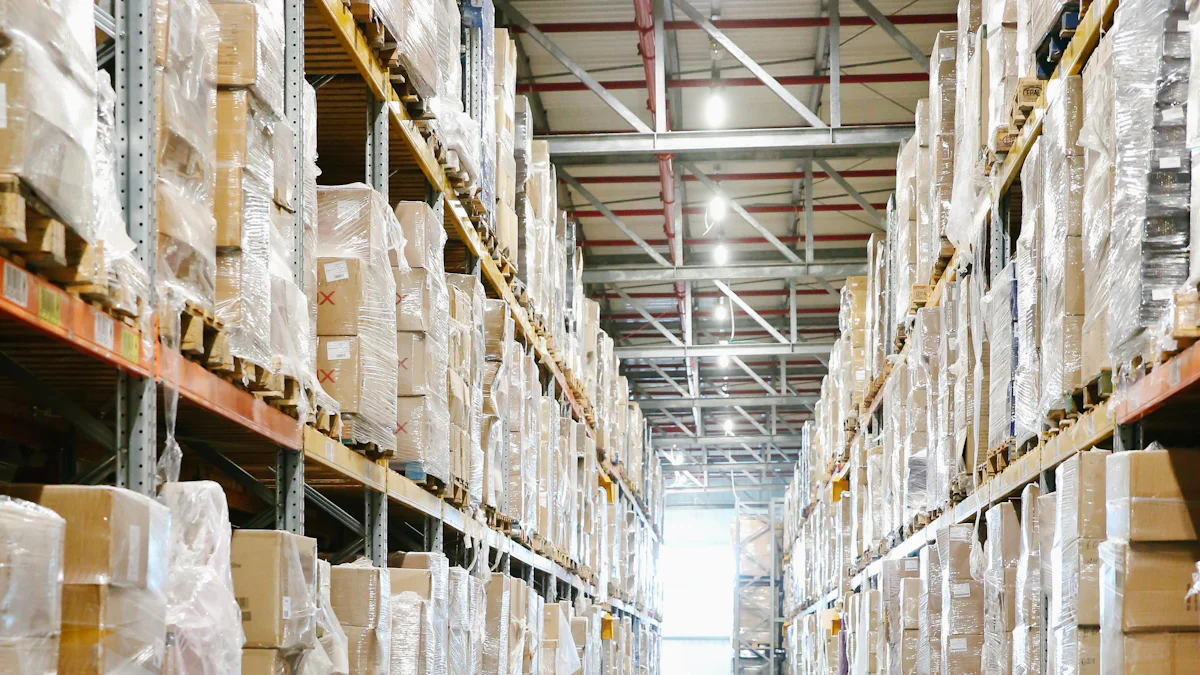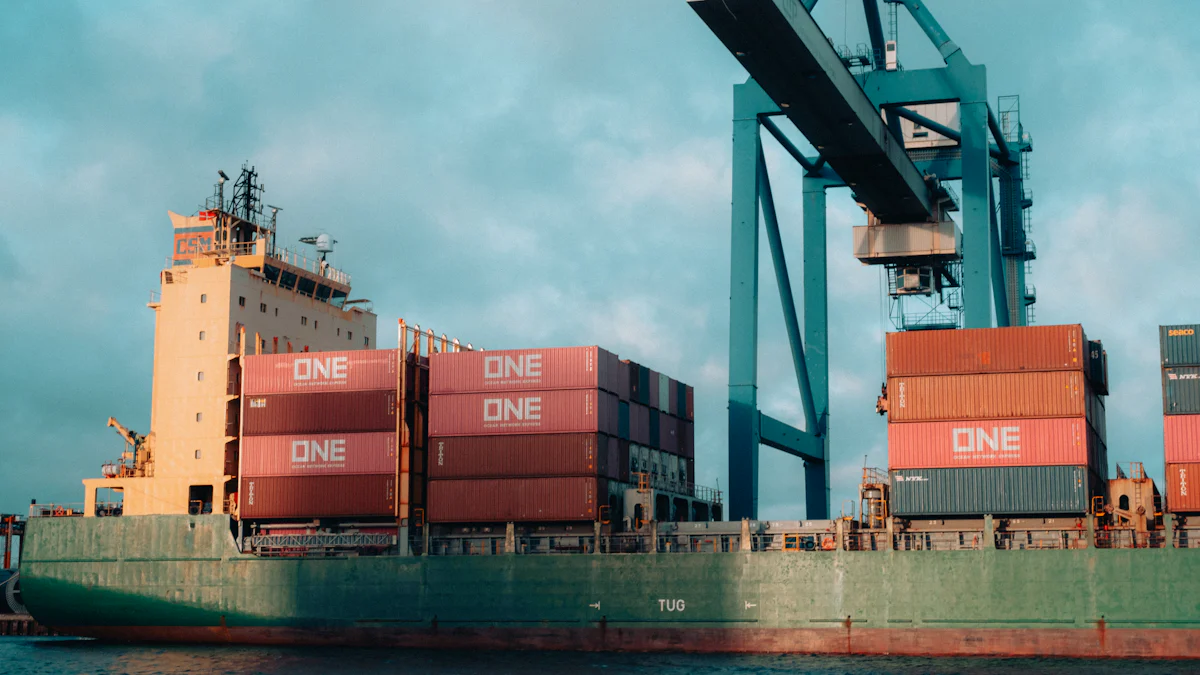Why Supply Chain Visibility is the Key to Business Success in 2025

Supply chain visibility has become a cornerstone of success for businesses navigating the complexities of 2025. It enables organizations to identify and address risks before they escalate, ensuring smoother operations and stronger compliance. Enhanced transparency fosters trust and accountability, particularly in meeting environmental, social, and governance (ESG) standards. By leveraging comprehensive data, companies can make faster, more informed decisions, reducing disruptions and improving efficiency. A supply chain’s visibility also strengthens oversight, allowing businesses to adapt to shifting market demands while maintaining a competitive edge in a dynamic global economy.
Core Benefits of Supply Chain Visibility

Proactive Risk Management and Mitigation
Supply chain visibility plays a pivotal role in effective risk management by enabling businesses to identify potential risks early and respond proactively. Companies with robust network visibility can monitor disruptions in real time, minimizing their impact on operations. For instance, DuPont leverages visibility tools to conduct targeted risk assessments, preventing costly incidents. Similarly, Cisco tracks freight lanes and operating locations to make strategic decisions that enhance resilience.
Organizations like Medtronic and Schneider Electric demonstrate how material flow visibility can mitigate risks across complex supply chains. Medtronic maps over 12,000 sub-tier suppliers to ensure timely delivery of critical products, while Schneider Electric uses real-time notifications to prevent major disruptions. These examples underscore how early identification of risks strengthens supply chain processes and safeguards operational efficiency.
Streamlined Operations and Cost Efficiency
A supply chain’s visibility directly contributes to streamlined operations and cost efficiency. By providing real-time data on inventory levels and demand patterns, businesses can optimize stock management, reducing carrying costs and maximizing sales potential. Enhanced logistics visibility also minimizes downtime by anticipating issues before they escalate, ensuring a steady material flow.
Visibility software identifies inefficiencies in supply chain processes, enabling companies to enhance efficiency and reduce costs. For example, real-time alerts allow businesses to avoid expedited shipping expenses by addressing disruptions early. Continuous analysis of operations fosters innovation, further improving productivity and reducing waste. These benefits highlight how supply chain visibility drives operational efficiency and financial performance.
Enhanced Customer Satisfaction and Loyalty
Supply chain visibility significantly impacts customer satisfaction by improving delivery accuracy and communication. Real-time updates on order status build trust and loyalty, as customers value transparency. High on-time delivery rates, achieved through effective logistics visibility, ensure that businesses meet customer expectations consistently.
Companies that track discrepancies in supply chain cycle times can implement improvements, leading to better service quality. For instance, improved visibility reduces delays, enhancing customer loyalty and generating positive word-of-mouth. By prioritizing visibility, businesses not only meet but exceed customer expectations, securing long-term loyalty and competitive advantage.
Financial Performance and Competitive Advantage
Supply chain visibility directly influences a company’s financial performance and strengthens its competitive position. Businesses with enhanced visibility often achieve higher EBIT (Earnings Before Interest and Taxes) linked to turnover. This demonstrates that visibility is not just an operational improvement but a critical driver of profitability.
Improved efficiency is one of the key financial benefits of a supply chain’s visibility. By identifying bottlenecks and streamlining processes, companies can reduce waste and optimize resource allocation. For example, real-time data enables businesses to monitor inventory levels and transportation routes, minimizing delays and cutting unnecessary costs. These efficiencies translate into significant savings and better financial outcomes.
Cost reduction is another advantage. Companies that leverage logistics visibility can negotiate better terms with suppliers and optimize shipping routes. This reduces operating expenses and enhances overall profitability. Additionally, network visibility allows businesses to adapt quickly to market changes, ensuring they remain competitive in dynamic environments.
The ability to mitigate risks also contributes to financial stability. Early identification of disruptions prevents costly delays and ensures consistent product availability. This reliability builds trust with customers and partners, further solidifying a company’s market position.
Ultimately, supply chain visibility drives both revenue growth and cost savings. Businesses that prioritize visibility gain a competitive edge by responding faster to customer demands and market shifts. In today’s fast-paced economy, visibility is not just a tool for operational success but a cornerstone of financial and strategic excellence.
Overcoming Challenges in Achieving Supply Chain Visibility
Breaking Down Data Silos and Fragmented Systems
Data silos and fragmented systems remain significant barriers to achieving supply chain visibility. Many businesses struggle to connect legacy systems with modern technologies, creating gaps in communication and data sharing. Resistance to change and poor data governance further complicate efforts to unify operations.
The most common obstacles include connecting new tech and legacy systems, data governance issues, and resistance to change.
Fragmentation within supply chains often manifests in several ways: disjointed communication channels, inconsistent data across departments, and siloed operations. These issues lead to inefficiencies, delays, and a lack of a unified view of the supply chain. For example, multinational operations face challenges due to varying local systems and regulations, while manual processes increase the likelihood of errors. Addressing these issues requires businesses to adopt integrated platforms that consolidate data and streamline workflows.
Integrating Advanced Technologies Seamlessly
Advanced technologies play a pivotal role in enhancing supply chain transparency and operational efficiency. Tools like IoT, AI, blockchain, and advanced analytics enable businesses to gain real-time data insights and improve decision-making. IoT sensors track shipments and inventory levels, while AI-powered analytics provide predictive insights for demand forecasting and risk management. Blockchain ensures data integrity and traceability, fostering trust across the supply chain.
However, integrating these technologies seamlessly requires careful planning. Businesses must ensure compatibility between new tools and existing systems. Training employees to use these technologies effectively is equally important. Predictive modeling, powered by AI and machine learning, combines internal and external data to identify potential risks and opportunities, further strengthening strategic and operational risk management.
Strengthening Collaboration with Suppliers and Partners
Stronger supplier relationships are essential for achieving logistics visibility and improving supply chain processes. Collaboration fosters open communication, enabling businesses to share real-time data and respond quickly to market changes. This reduces risks, enhances demand forecasting accuracy, and ensures a steady material flow.
Improved collaboration also leads to cost savings and operational efficiency. For instance, sharing sales information with suppliers optimizes reorder points, reducing excess inventory. Open communication allows for rapid problem resolution, minimizing disruptions. Additionally, feedback from suppliers and partners drives product innovation, ensuring businesses remain competitive in dynamic markets. By prioritizing collaboration, companies can build resilient networks that support long-term growth.
Solutions and Strategies for Logistics Success in 2025

Leveraging Cutting-Edge Technologies
AI for Predictive Analytics and Decision-Making
Artificial intelligence (AI) has transformed modern logistics management by enabling predictive analytics and smarter decision-making. Companies like Western Digital have used AI-powered tools, such as its Predictive Risk Engine, to safeguard supply chains during disruptions like the COVID-19 pandemic, saving millions. Walmart leverages AI to analyze vast amounts of transactional data, streamlining inventory management and enhancing customer experiences. AI continuously processes inputs to forecast demand, predict equipment failures, and optimize inventory levels, ensuring successful logistics operations.
IoT for Real-Time Monitoring and Tracking
The Internet of Things (IoT) provides real-time data that enhances supply chain visibility and operational efficiency. Businesses like Amazon and Walmart use IoT-enabled devices to monitor stock levels, reducing excess inventory and stockouts. Logistics giants such as FedEx and UPS rely on IoT for GPS tracking, optimizing delivery routes and cutting fuel consumption. IoT also supports sustainability and ethical practices by monitoring temperature-sensitive goods, as seen with Pfizer’s vaccine distribution. These capabilities enable real-time responses to uncertainties, improving service delivery and ensuring end-to-end visibility.
Blockchain for Secure and Transparent Transactions
Blockchain technology ensures enhanced transparency and security in supply chain transactions. By creating immutable records, blockchain eliminates fraud and provides an audit trail for tracking assets throughout their lifecycle. This traceability is vital for industries prioritizing sustainability and ethical practices. Blockchain also streamlines processes, enabling faster transactions and reducing reliance on paper documentation. Smart contracts further enhance efficiency by automating agreements, fostering improved compliance and stronger supplier relationships.
Building Collaborative and Transparent Supply Chain Networks
Collaboration and transparency are essential for logistics success in 2025. Transparent networks allow businesses to track products throughout their lifecycle, improving forecasting accuracy and reducing inventory levels. Proactive decision-making, enabled by real-time updates, minimizes risks and enhances operational performance. Stronger supplier relationships foster open communication, ensuring a steady material flow and reducing inefficiencies. By prioritizing collaboration, companies can achieve improved compliance and build resilient supply chains that adapt to market changes.
Implementing Integrated Supply Chain Platforms
Integrated supply chain platforms consolidate data and streamline workflows, enabling businesses to maximize efficiency. These platforms facilitate real-time data sharing, enhancing collaboration between suppliers and stakeholders. Features like automated coordination and real-time tracking of shipments allow companies to respond proactively to disruptions. By reducing manual oversight, integrated platforms improve service delivery and lower operational costs. This approach ensures businesses maintain a competitive edge in modern business environments while achieving logistics success.
Supply chain visibility has become a critical driver of business success in 2025. Companies that embrace this approach can navigate uncertainty, seize opportunities, and achieve sustained growth. The long-term benefits are substantial:
Benefit | Description |
|---|---|
Improved efficiency | Identifies bottlenecks and inefficiencies, leading to cost savings and better resource utilization. |
Reduced lead times | Enables faster order fulfillment and improved customer satisfaction through better tracking. |
Inventory optimization | Helps manage inventory levels effectively, reducing overstocking and understocking risks. |
Enhanced customer service | Improves communication with customers about order status, increasing satisfaction and loyalty. |
Risk management | Proactively identifies and mitigates supply chain risks, enhancing resilience. |
Companies like ZeroDown and a leading global logistics firm have demonstrated the transformative impact of visibility strategies. ZeroDown leveraged FreightOptics™ to uncover hidden accounts, driving better decisions and cost savings. The logistics company achieved operational efficiency and financial oversight by gaining full transportation data visibility.
By adopting advanced technologies and fostering collaboration, businesses can unlock operational, financial, and customer-centric advantages. Those who invest in supply chain visibility today will secure a competitive edge and thrive in the evolving global marketplace.
See Also
Transparency: Essential For Achieving Supply Chain Success
The Importance of Visibility in Supply Chain Efficiency
How Supply Chain Visibility Drives E-commerce Success
